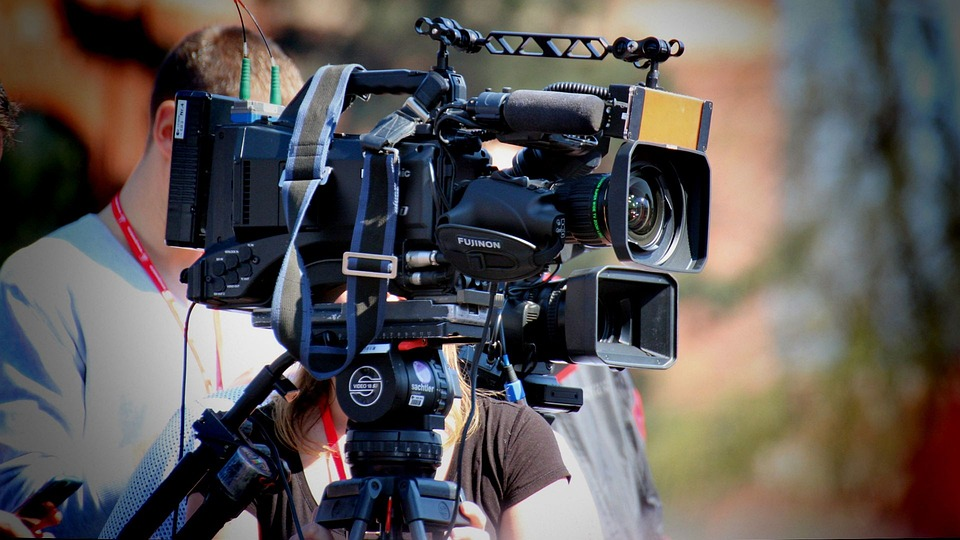What is Realism in Film? An Important Guide for Filmmakers
Realism in the film is a captivating and essential aspect of storytelling that has the power to deeply resonate with audiences. In this comprehensive guide, we will delve into the intricacies of cinematic realism, exploring its definition, significance, and impact on the art of filmmaking.
From understanding the concepts of cinematic realism and formalism to examining the types and history of realism in film and TV, this article will provide a nuanced exploration of how filmmakers can harness the power of authenticity and relatability in their storytelling.
We will also delve into real-life examples, such as Italian Neo-Realism and modern realism, and discuss the influence of realism on genres like crime drama and psychological storytelling. We will explore the delicate balance between realism and fantasy in film and TV, and how this balance can affect audience connection and engagement.
Whether you’re a filmmaker looking to infuse your projects with realism or a film enthusiast eager to understand the intricacies of authentic storytelling, this guide aims to equip you with valuable insights and practical tips. So, join us as we embark on an illuminating journey through the captivating world of realism in film and TV.
Key Takeaways:
Realism in film is the portrayal of events, characters, and settings in a way that reflects the real world, with a focus on authenticity and reliability. Authenticity and relatability are key elements of realism in filmmaking, as they help to create a strong connection and engagement with the audience. A balance between realism and fantasy can add depth and impact to a film, creating a well-rounded and engaging viewing experience for the audience.
Understanding Realism in Film

Realism in film is a captivating approach that aims to provide an authentic feel and portray real-world issues through storytelling and visual techniques.
This approach emphasizes the accurate depiction of everyday life, often blurring the lines between fiction and reality. Realist cinema seeks to immerse the audience in the characters’ experiences, leading to a deeper emotional connection. By capturing the nuances of human behavior and societal dynamics, realism in film challenges viewers to confront universal truths and contemplate the complexities of the human condition.
This style of filmmaking places emphasis on natural lighting, on-location shooting, and unfiltered dialogue, fostering a sense of immediacy and intimacy.”
What is Cinematic Realism?

Cinematic realism refers to the portrayal of real-world scenarios and characters in a manner that captures an authentic feel and evokes an immersive experience for the viewers.
This film style prioritizes naturalistic acting and minimizes artificiality in dialogue delivery and character behavior. Documentary-like authenticity is often achieved through handheld camerawork, on-location shooting, and ambient sound recording, creating a sense of being present in the depicted environment.
The impact on audience immersion is profound, as viewers feel an emotional connection to the characters and settings, blurring the line between fiction and reality. Cinematic realism can provoke contemplation of contemporary social issues and prompt introspection, making it a powerful tool for storytelling.
What is Cinematic Formalism?
Cinematic formalism encompasses a stylistic approach that involves interweaving fantasy elements with meticulous attention to detail, creating an enchanting and visually striking world for the audience.
One of the key aspects of cinematic formalism is its use of fantastical settings to transport viewers to imaginative realms, blurring the lines between reality and fiction. Within these settings, filmmakers pay meticulous attention to detail, ensuring that every aspect of the visual and auditory experience is carefully crafted to evoke a sense of wonder and immersion.
Whether it’s the intricate architecture of a fictional city, the ethereal landscapes of a dream sequence, or the enchanting visual effects that bring otherworldly creatures to life, cinematic formalism excels in creating captivating and mesmerizing visuals that captivate the audience.
Realism vs Formalism in Film

The debate between realism and formalism in the film revolves around the juxtaposition of creating an authentic atmosphere while incorporating fantastical elements, striving to strike a balance that resonates with the audience’s emotional investment.
Realism in film aims to depict situations, characters, and settings in a genuine and lifelike manner, often drawing inspiration from real-life events and emotions. It seeks to present a truthful portrayal of human experiences, evoking a sense of authenticity and relatability for the audience.
On the other hand, formalism embraces stylized and constructed narratives, employing unconventional techniques such as non-linear storytelling, surreal imagery, and abstract symbolism to provoke thought and evoke emotional resonance.
While realism emphasizes the importance of capturing everyday life and genuine emotions, formalism emphasizes creativity, imagination, and symbolism, offering a different yet equally compelling perspective on storytelling. The balanced representation lies in the filmmaker’s ability to blend these contrasting elements seamlessly, ensuring that the narrative strikes a chord with the audience while offering a fresh and thought-provoking experience.
Types of Realism and Formalism in Film

The diverse landscape of film includes various types of realism and formalism, such as Italian neorealism, modern realism, and the art of world-building, each contributing to the nuanced blend of cinematic storytelling and visual representation.
Italian neorealism focuses on depicting the lives of ordinary people, often using non-professional actors and natural settings to create a sense of authenticity. This approach places a strong emphasis on social issues and human experiences, aiming to capture the rawness of everyday life.
Modern realism, on the other hand, encompasses a broader range of subjects and styles, incorporating elements of contemporary society and culture while maintaining a sense of authenticity and relevance. It often explores the complexities of interpersonal relationships and the impact of external forces on individuals and communities.
The art of world-building, as seen in fantasy and science fiction films, showcases a form of formalism that involves creating intricate and immersive fictional universes with their own set of rules and logic. This type of formalism allows filmmakers to craft visually stunning and thematically rich environments, offering audiences a unique and captivating escape into alternate realities.
History of Realism in Film and TV
The history of realism in film and TV traces back to influential works by Italian neorealists such as Vittorio De Sica, shaping the trajectory of cinematic storytelling through their nuanced portrayal of real-life experiences.
This movement, emerging in the aftermath of World War II, sought to capture the raw and unembellished essence of everyday life, embracing non-professional actors and authentic settings to convey the hardships and struggles faced by ordinary people. Neorealist masterpieces like Bicycle Thieves and Rome, Open City emphasized the human condition with an unflinching gaze, inspiring a wave of filmmakers worldwide to adopt a more authentic, unvarnished approach to storytelling.
This marked a pivotal shift from the glamour and escapism of traditional cinema to a more grounded, socially conscious form of artistic expression.
Realism Examples in Film and TV
Realism finds expression in notable film and TV examples such as Boyhood and The Wire, employing naturalistic dialogue and evoking profound emotional responses through their authentic portrayal of real-world themes.
These cinematic masterpieces demonstrate the unparalleled impact of realistic storytelling on audience engagement. In ‘Boyhood’, the use of a 12-year-long filming process captures the raw essence of life’s unpredictability, resonating deeply with viewers.
Similarly, ‘The Wire artfully interweaves the complexities of societal structures with compelling and organic dialogue, immersing audiences in the urban realities it portrays. This integration of societal nuances and interpersonal dynamics serves as a testament to the enduring power of realism in cinematography.
Italian Neo-Realism
Italian neorealism, epitomized by masterpieces like ‘Bicycle Thieves’ and ‘Nostromo’, captivated audiences and critics alike, garnering praise for its unflinching exploration of real-world issues and nuanced storytelling, as advocated by film theorist André Bazin.
Italian neorealism emerged as a response to the socio-political climate of post-World War II Italy, reflecting the harsh realities of everyday life. The movement prioritized authenticity by using non-professional actors and filming on location to create a raw, documentary-like aesthetic. Works like ‘Rome, Open City’ by Roberto Rossellini and ‘Shoeshine’ by Vittorio De Sica are striking examples of this approach, garnering international acclaim and inspiring filmmakers across the globe. Critics praised the movement’s humanistic portrayal of ordinary people, their struggles, and the social conditions they faced, resonating with audiences on a profound emotional level. Italian neorealism’s influence continues to reverberate through the world of cinema, leaving an indelible mark on storytelling and filmmaking.
Modern Realism
Modern realism, as exemplified in works like ‘Winter’s Bone‘ and series like ‘Friday Night Lights‘ by creators such as David Simon, continues to enthrall audiences with its compelling narrative and authentic portrayal of real-world themes.
This cinematic and narrative approach emphasizes the genuine depiction of everyday life, often shunning traditional sensationalism for a raw and unfiltered representation of societal issues, human emotions, and moral dilemmas. This realism in storytelling draws viewers into intimate and relatable experiences, fostering a profound connection and emotional investment.
With its truthful reflection of contemporary society, modern realism in film and television serves as a powerful vehicle for social commentary and introspection, confronting audiences with thought-provoking narratives that resonate deeply.
Realism in Crime Drama
Realism in crime drama, exemplified by productions like ‘Shutter Island’ and the cinematic endeavors of Christopher Nolan, invites emotional investment from the audience through its authentic atmosphere and nuanced characters.
This genre often delves into the complexities of human nature, depicting the gritty realities of crime and its impact on society. Realism in crime drama not only captivates viewers through its raw and relatable narratives but also employs visual storytelling techniques such as gritty cinematography and intense sound design to immerse the audience in the world of crime. Directors like David Fincher and Quentin Tarantino have masterfully utilized these techniques in their works, evoking strong emotional responses from the audience.
Psychological Realism
Psychological realism, as showcased in films like ‘Memento’ and ‘Amour’, delves into the complexities of the human psyche, evoking profound emotional resonance through its nuanced portrayal of characters and real-life experiences.
This approach to filmmaking prioritizes authenticity and depth in character portrayal, often diving into the internal struggles, contradictions, and vulnerabilities of individuals.
By steering away from idealized or exaggerated depictions, psychological realism allows audiences to connect with characters on a deeply human level, fostering empathy and introspection.
Its emphasis on the intricacies of interpersonal relationships, internal conflicts, and moral dilemmas, psychological realism adds layers of complexity and relatability to the narrative, enhancing the overall emotional resonance that captivates audiences.
Key Elements of Realism in Filmmaking
The key elements of realism in filmmaking encompass the use of authentic locations, naturalistic acting, and a documentary-like feel, aiming to engage viewers through a compelling narrative and immersive experience.
Authentic locations play a vital role in transporting the audience into the world of the film, providing a sense of believability and depth to the storytelling. When a film is set in a real, recognizable location, it creates a connection with the viewers, enhancing their emotional investment in the narrative.
Naturalistic acting contributes to the sense of realism by portraying characters with genuine emotions and behaviors. This style of performance allows the audience to relate to the characters on a personal level, making the on-screen events feel more authentic and impactful.
The documentary-like feel in realism filmmaking adds a layer of rawness and immediacy to the storytelling, often blurring the lines between fiction and reality. This approach can evoke a strong emotional response from the audience, drawing them deeper into the film’s world and themes.
The Importance of Authenticity and Relatability in Realistic Storytelling
Authenticity and relatability are pivotal in realistic storytelling, enabling the exploration of real-world themes and fostering emotional investment from the audience, thereby creating a lasting impression through nuanced characters and compelling narratives.
When a story feels authentic and relatable, it resonates deeply with the audience, drawing them into the narrative and allowing them to emotionally connect with the characters and their experiences. This emotional investment not only captivates the audience but also leaves a profound impact, as they can see their own lives, struggles, and aspirations reflected in the storytelling.
By integrating authentic and relatable elements into narratives, storytellers can address universal human experiences and dilemmas, making the stories enduring and impactful.
Realism vs. Fantasy: Striking a Balance in Film and TV

The juxtaposition of realism and fantasy in film and TV revolves around the pursuit of striking a balance that interweaves authentic storytelling with the art of world-building, striving to captivate audiences through its attention to detail and immersive world-building techniques.
When realism and fantasy are effectively intertwined, they create a seamless narrative that transports viewers into new worlds while resonating with relatable human experiences. Captivating storytelling is instrumental in making this fusion work, leveraging the emotional connections and suspension of disbelief essential to drawing in audiences.
The balance between the two elements gives creators the freedom to explore boundless imaginations while grounding their narratives in the recognizable, delicate harmony that fosters a unique and immersive viewing experience.
Exploring the Impact of Realism on Audience Connection and Engagement
The impact of realism on audience connection and engagement is profound, as it allows for the exploration of real-world issues, evokes emotional resonance, and establishes a deep connection with viewers through relatable characters and scenarios.
Realism in storytelling serves as a mirror to society, addressing pertinent themes such as social injustice, human struggles, and moral dilemmas. By presenting authentic and unembellished narratives, realism compels viewers to confront uncomfortable truths and empathize with the characters’ experiences. This emotional resonance stems from the genuine depiction of everyday life, offering a sense of recognition and relatability that draws audiences into the story.
The inclusion of realistic elements in storytelling fosters a profound connection between the audience and the narrative. Viewers are more likely to engage with and invest in a story when it reflects their own experiences, challenges, and aspirations. This connection cultivates a heightened sense of empathy and understanding, prompting individuals to contemplate the themes and messages within the narrative on a personal level.
How to Add Realism to Your Project
Adding realism to your project involves strategic filmmaking decisions, attention to detail, and a focus on realistic storytelling that captures the essence of real-life experiences and emotions, thereby enhancing the overall authenticity and relatability of the narrative.
Delving into the world of filmmaking, the incorporation of realistic elements breathes life into the storytelling process. A filmmaker must carefully consider every aspect, from the setting and costumes to the dialogue and character development.
Realism encompasses not only the visual components but also the emotional depth portrayed by the actors. It requires a profound understanding of human behavior and societal dynamics, resulting in a narrative that resonates deeply with the audience. Successful integration of realism enhances the audience’s ability to empathize with the characters and immerse themselves in the story, creating a more captivating and authentic viewing experience.
Conclusion: Embracing Realism in Film and TV
In conclusion, embracing realism in film and TV entails a nuanced blend of realist cinema, immersive world-building, and a compelling storytelling approach, fostering an authentic atmosphere and engaging the audience through its attention to detail and real-world themes.
This incorporation of realism allows filmmakers and show creators to depict the complexity of human emotions and experiences in a raw and unfiltered manner.
Realist cinema emphasizes the use of natural lighting, genuine locations, and non-professional actors to portray relatable narratives, providing a sense of authenticity that captivates viewers.
The immersive world-building aspect enables audiences to fully immerse themselves in the depicted universe, amplifying the impact of the storyline and characters. Meanwhile, the compelling storytelling delves into the intricacies of everyday life, tackling relevant societal issues and offering a mirror to reflect the audience’s lived experiences.
Further Reading and Related Posts
Dive deeper into the exploration of realism in film and TV through additional reading and related posts, uncovering insights into real-world themes, relatable characters, and the impact of naturalistic dialogue on authentic storytelling.
When exploring realism in film and TV, it’s vital to consider the seamless integration of real-world themes and relatable characters. The power of naturalistic dialogue lies in its ability to create authentic storytelling that resonates with audiences on a deeper level, evoking genuine emotions and connections.
To delve further into this fascinating topic, consider reading ‘The Art of Realism in Cinema’ by renowned film critic Sarah Jenkins. This insightful book offers a comprehensive analysis of film techniques and storytelling methods that bring realism to life on screen.
Additionally, ‘Understanding Realism in TV Dramas’ by David Robertson is a thought-provoking resource that delves into the significance of realistic portrayals in television, highlighting the impact on viewer engagement and empathy. Exploring such content will broaden your understanding of how realism enhances the storytelling experience, shaping narratives that mirror the complexities of human existence.
Frequently Asked Questions
What is Realism in Film?
Realism in film refers to the technique of presenting a story or subject in a realistic and authentic manner, often depicting everyday life and situations in a truthful and believable way.
How is Realism different from other film styles?
Realism stands in contrast to other film styles such as fantasy or romanticism, which often use exaggerated or idealized elements to tell a story. Realism focuses on portraying events and characters in a way that reflects the real world.
Why is Realism important for filmmakers?
Realism allows filmmakers to create stories that are relatable and relevant to audiences. By depicting real-life situations and characters, filmmakers can connect with viewers on a deeper level and provoke a more emotional response.
Can Realism be applied to any genre of film?
Yes, Realism can be applied to any genre of film, from drama and comedy to horror and science fiction. It is a technique that can be used to enhance the authenticity and believability of any story, regardless of its genre.
What are some key elements of Realism in film?
Some key elements of Realism in film include naturalistic acting, minimal use of special effects or stylized visuals, and a focus on everyday struggles and experiences. The use of real locations, props, and costumes also contribute to the overall realistic effect.
How can filmmakers achieve Realism in their films?
Filmmakers can achieve Realism by conducting thorough research, immersing themselves in the subject matter, and paying attention to detail. It is also important to have a strong script and effective directing techniques that bring out the true emotions and behaviors of the characters.
